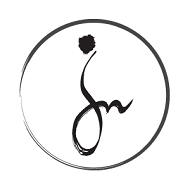How Feldenkrais changed my perception about my body image
let me ask you a personal question: How do you feel about your body image?
To many of us our bodies feel like machines. They can be ‘good’ machines when they work well and look good or ‘bad’ machines when pain and limitations disable us from achieving what we want. The perception that we have of our bodies is thus external – how they function and look, and internal – by bodily sensations such as pleasure or pain, and emotions such as pride or shame.
But what about our body image? Our conscious body image might be very different from how society perceives it to be: We develop an unconscious body image from early childhood from internal senses of the muscles and joints in relation to space and gravity, from our personal history and experiences, from our parents and community, and from cultural concepts and taboos of what’s right and wrong.
What is amazing is that we move, feel and think according to our body-image, yet it is hidden from us. We try to make positive changes in our bodies by exercising but reach a threshold which we can’t go pass because our body image hasn’t changed yet.
To give a more concrete example, try the following exercise: lie on your back, make yourself comfortable, and try to bring your attention to your spine, from the tailbone till it reaches your head. You will probably notice it’s not so simple: some parts along the ‘line’ are easy to sense and are clear to the mind. But some parts of the spine might be missing, as if there are gaps along this line. As if someone erased or blurred segments along a line on a piece of paper. Directions might be confusing; the length of the spine might feel very short or very long, and so on. Those areas that are missing or blurry are the parts that your brain has little or no information about when you perform any action, be it bending down, reaching for a cup, or looking up to the sky. This means that you do not use your body to its full potential, overloading certain areas and neglecting others.
The Feldenkrais Method emphasises the importance of self-awareness in movement. This principle is key in making positive changes in the way we use our body and the way we feel about it. On a personal note, Feldenkrais certainly made a big difference in my perception of my body. It led me to perceive my body not as a machine but as an integral part of my holistic self. It showed me how different aspects of my being were interconnected and influenced each other. Each movement encouraged me to move with awareness, focusing on how each movement felt rather than how it looked. This was a stark contrast to my past approach to movement, which was more about achieving targets and less about experiencing the process.





